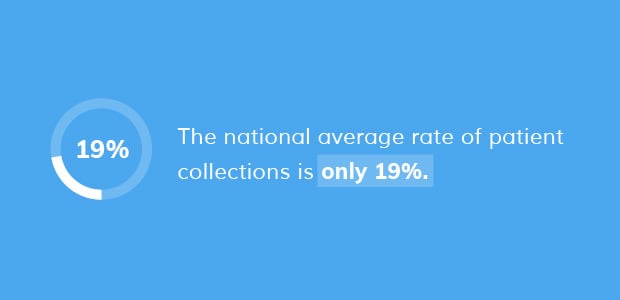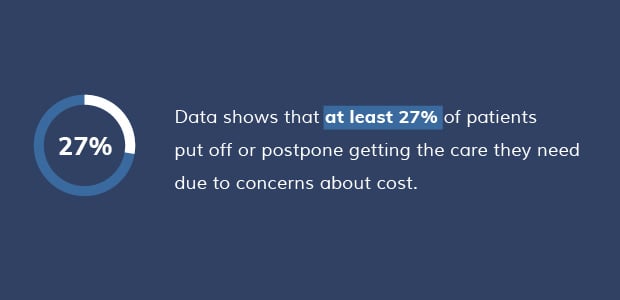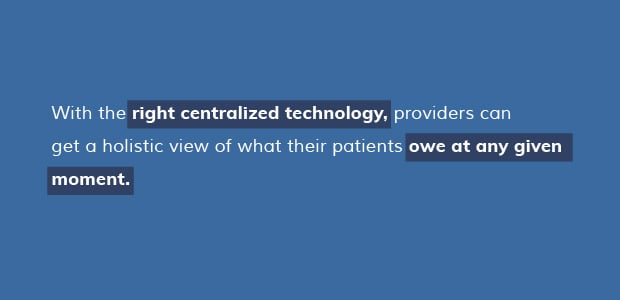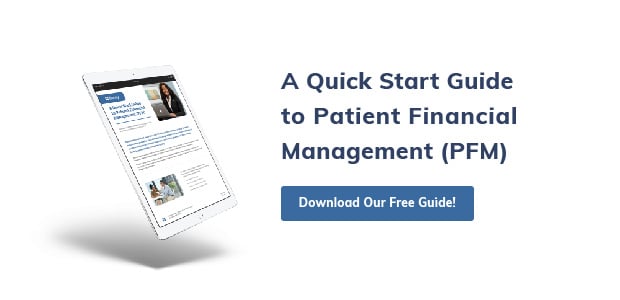By: Christopher Wolfington
Good Patient Financial Experiences Should be Standard Practice
March 27, 2020
Written by: John Ziegler
This bears repeating: good patient financial experiences should be standard practice. Currently, they are anything but standard.
Healthcare costs continue to rise, coalescing into a significant and often unforeseen burden for millions of patients. For perspective: USA Today estimates that healthcare is currently the fourth largest consumer expense in the country. Other studies predict that total out-of-pocket healthcare expenditures will surpass $459 billion by 2022. Given these metrics, it’s no wonder that medical expenditures are the leading cause of debt and bankruptcy in the United States.
For providers, in turn, the likelihood of collecting patient balances continues to fall. The national average rate of patient collections is only 19%, a measly figure considering the billions of dollars that make up Americans’ outstanding balance. In the simplest of terms, patients just can’t afford the care they’re receiving, and collecting on their balances has become a source of frustration and financial consequence for providers.

This only complicates the relationship between patients and providers. It’s essential for patients to feel that their voices are heard and their needs are met. Providers, of course, strive for these same outcomes. However, unanticipated or otherwise unpaid bills mean that providers often have to step into patient collection procedures — their bottom line may depend on it. It is difficult for patients to stomach their trustworthy provider transitioning into the role of debt collector, particularly when outstanding balances — and stakes — are high. Even in the most straightforward of cases, patients will be left with a bad taste in their mouths.
While rising healthcare costs will continue to challenge both patients and providers, there is a way to improve the patient financial experience. We’ll unpack the patient perspective, how to create and standardize better patient experiences, and the overall benefit to your brand image and bottom line.

Patient Perspectives and Preferences
Patients want to avoid surprise charges
There is a world of difference between a charge a patient anticipates and one they do not. The former can be a line item in their monthly or yearly budget; they can plan for it, rearrange their expenditures to accommodate it, and be sure the money is available when the bill comes due. However, healthcare expenses too often fall into the latter category. Medical bills are already a source of confusion and frustration for patients, but when they’re a surprise? That’s even more stressful.
Patients want to make informed decisions about their care
More often than not, surprise charges are a product of patients not having all the information about their care. Or, in some cases, they are a consequence of not understanding the options available. Patients want to be able to make the right decisions about their care, taking everything from timing, risk factors, comfort level, and cost into account. These decisions are complicated, and their effects can be consequential -- but the process does not have to be so difficult. Providing patients with all the information about their options for care and coverage, as well as brainstorming strategies to pay for upcoming expenses, is a great way to mitigate unexpected consequences. Patients can only make the right decisions with the right information in hand. When healthcare is the matter on the table, the right information is all the information.
We’ve grouped financial considerations in with the rest of the factors that influence care decisions, but it’s particularly important to outline anticipated coverage and expenditures for patients. Data shows that at least 27% of patients put off or postpone getting the care they need due to concerns about cost. Often, though, these patients are not aware of additional coverage options or payment strategies. Moreover, they may not have thought through ways to adjust their budget and accommodate lifesaving care.

How To Standardize Better Experiences
Pre-Care Engagement
Our goal in outlining these patient perspectives was to emphasize some of the financial challenges of the current healthcare ecosystem. Surprise charges and confusion about options are huge contributors to patients missing or not being able to pay their medical bills. Clearly, there is a need for intervention earlier in the healthcare journey. Patients need to understand their journey before they embark on it -- that way, they can pack what they need, follow the map, and arrive at their destination unscathed.
That’s where pre-care engagement comes in. This practice is exactly what it sounds like: an effort to engage patients, specifically on financial matters, before their care begins. Educated counselors can make a world of difference for confused patients by creating a comfortable environment to ask questions. Moreover, these counselors can leverage their expert understanding of the healthcare ecosystem to identify additional coverage -- or, at the bare minimum, outline the costs associated with each care option.
This is the information patients need and deserve in order to effectively manage their care. They cannot do this alone; healthcare is too complicated, and individual cases are too unique. Successful pre-care engagement ensures that patients have the support required to empower them to make smart and proactive choices about their health.

Automation
Pre-care financial counseling is only the first of many strategies for optimizing the patient experience. Counseling mitigates the surprise costs associated with healthcare, and increases the likelihood of patients meeting their obligations, but it does not address the burden of provider collections.
This is a job for automation. We all expect a certain degree of automation -- with each passing day, technology governs more of how we socialize, work, and altogether exist in the modern world. It’s time for technological advancements to be implemented into patient financial management.
With the right centralized technology, providers can get a holistic view of what their patients owe at any given moment. They can identify risk factors and adjust management accordingly, shifting attention to more pressing cases. Moreover, payments can be scheduled, processed, and collected on a rigid calendar -- and every element of these procedures can be standardized and set up in advance. Automation is the wave of the future for a reason. There’s beauty to it, for the provider and for the patient.

The overall benefit of pre-care engagement is clear. It allows your practice to separate revenue management from ongoing patient engagement by taking care of financial business on the front end. Having these conversations earlier, as well as putting automated plans in place, absolves your practice of the need to babysit patient collections. Instead, you’ll be able to focus on your true priority: providing the best care to your patients.
Better patient experiences lead to more satisfied customers, increasing the likelihood that your practice will retain these patients, and patients will complete their full recommended treatment plan without the barrier of affordability causing them to re-think showing up to those last few weeks of physical therapy, for example. Satisfied customers will return in the future, and they’re more likely to leave positive reviews that will attract new business. Altogether, efforts to improve the patient experience will pay massive dividends for your bottom line and brand image.
Don’t wait to reap these rewards. Download our free guide to improving the patient financial experience today.




